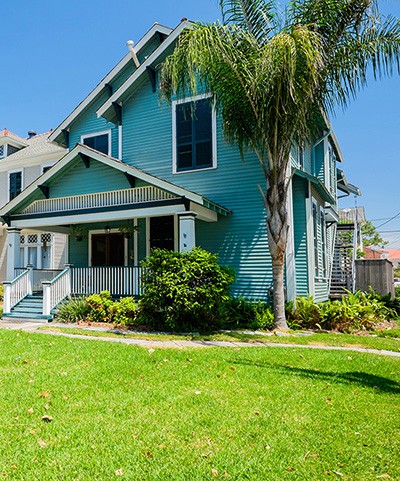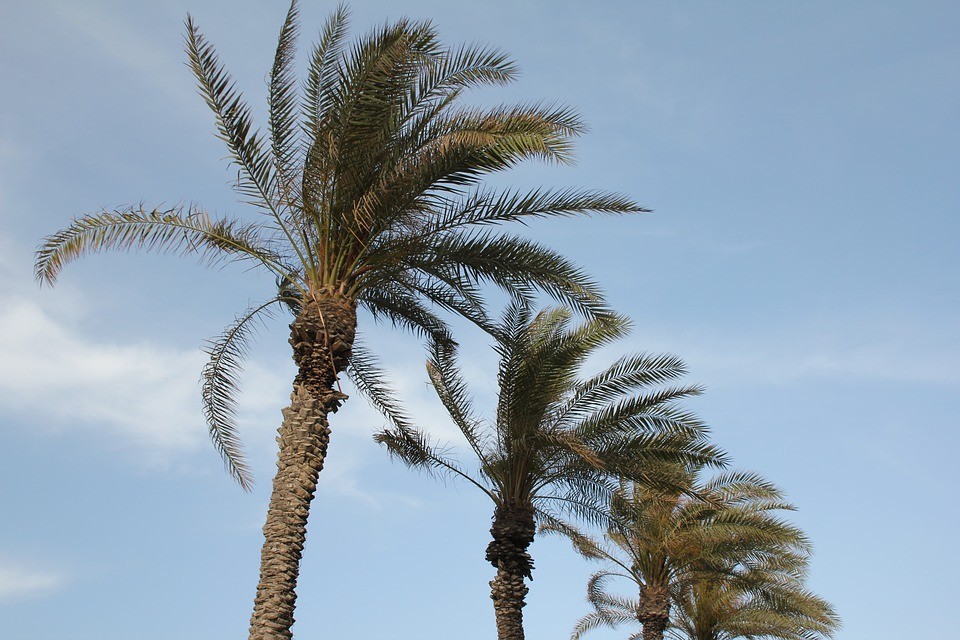All About Palms
The world is home to over 2,600 species of palm trees belonging to the Arecaceae family. This count is constantly growing with the discovery of new species. Of all that we currently know, over 50 species are found across Australia. They thrive in the tropical, sub tropical and warm temperature climates – a perfect match for Queensland. All palms can be categorised into types based on their leaves also known as fronds. The most common types in Australia are the palmate and pinnate palms. The pinnate can be distinguished by its feather like leaf where as the palmate leaf looks more like a Japanese hand fan. Not only do palms differentiate by their leaf shape, they also have a variety of trunk shapes and features.
Now that you know a bit more about this amazing plant – let us investigate the pros and cons.
The Look
When it comes to palms trees, there is more than meets the eye. Dating back to the roman ages, a palm tree was considered a symbol of victory and triumph. Some people may still hold this representation however since then the symbol has developed. Palm trees now often represent tropical or coastal destinations. We all know those classic Hawaiian button up shirts.
A palm tree can bring a holiday vibe to one’s home. Picture a cluster of them surrounding a crystal blue pool, a line of them swaying along a long pathway or fence. Their radiating fronds make them such an iconic plant, whilst their past and present symbolism adds value. Though at the end of the day it comes down to personal opinion.
Diversity
Let’s say you don’t like a certain type of palm or you don’t think it will work in your yard. The diversity of palms is so large that there is surely a type that suits you and your space. As mentioned before there a two main types of palms differentiated by their fronds. Here is how they compare:

In addition to their fronds, palms also differentiate by trunk. Which essentially is how they grow. A solitary trunk consists of one singular trunk and is the typical form of a palm tree.
The next is a clustered trunk. This is where there is a dense cluster of trunks connected together however each trunk grows on its own path.
The third and final trunk is the no trunk. This is where the trunk is either very short or completely underground. It will appear as the leaves are growing straight from the ground. As this form of palm is close to the ground, they can take up a lot of space. However they are perfect for filling in bare areas.
Shade
In any warm climate, the shade of a tree is always your best friend when it gets too hot. Unfortunately for a plant that flourishes in these temperatures, palms provide minimal shade. Palm trees have a sparse foliage. The leaves are usually separated by gaps minimising the overall surface area for sun protection. In addition, their fronds are often long and so they tend to flop downwards and lose strength towards the end. However others can be short and compact. Ideally the best tree for shade will reach long and have a full, compact leaf formation.
The shade of a typical singular palm is minimal due to its inability to have a decent circumference. A clustered palm on the other hand can reach wider lengths and cover a larger area with several directional trunks. Although this form of palm can be criticised due to its appearance as it may seem too wild than solidarity plants.
Strength
Despite their fronds seeming to be frail, the palm tree is a very sturdy plant even the tallest of them. In fact palms are known to withstand some of the most drastic tropical cyclones. Whilst they may sway around in these extreme weathers as such, it is from their amazing root system that they draw strength. The roots of a palm grow deep below the ground and hold tightly. With that said however that means that you should not plant palms near a structure. Otherwise their strong and long roots may pose danger to building foundations, gas lines and drainage systems.
Much like any other plant, the palm may experience rotting of the roots, also known as Psythium Blight. This rotting is caused by large amounts of water getting cooped up around the plant. This drowning effect will cause the roots to soften and lose strength leaving a weak core. Palms with soft roots will also lose old leaves and brown the it’s existing ones. This sensation can be avoided by having the right soil. The most earthy soil that palms love and thrive in are sand based soils. Compared to other soils sand is light and drains well.
Mess
Much like any growing organism, palms leave mess behind in their travels. A positive to this fact however is that there is no need to rake fallen leaves due to the nature of their fronds. Palm leaves die and fall seasonally. However due to their size, they can be easily lifted or dragged to a bin for proper disposal. This requires minimal maintenance compared to raking up smaller leaves from other trees on a regular basis.
Dead palm leaves are easily identifiable due to their brown colour that stands out among the greenery. It is wise not to prune dying fronds yourself as diseases can spread to the remaining fronds. The positioning of the palm also is a big factor in the clean up. Due to their height potential, palms droppings may not make it to the ground entirely. They have known to be caught on fences, rooftops and other plants. This sometimes makes it harder to reach and requires more effort to dispose it all.
Not only do palms drop dead fronds, some species also grow and drop abundances of big and small seeds. This is a result of the reproductive cycle of all trees. If not attended to early, these seed pods can produce very messy yard.
Property and Growth
Backyards are smaller than ever. This is due to Brisbane’s rising population and the need for new homes. Houses are now being built closer to each other than ever before and we are losing our privacy. A common method to increase privacy in your home is planting a tree. This can’t just be any old tree. The tree needs to grow quickly. Palms are some of the fastest growing trees. Some species can even grow almost one metre per year.
Unfortunately, while the palm may grow rapidly, it provides minimal privacy. Similar to its inability to provide adequate shade, the sparse foliage of a palm is also to blame for its lack of coverage.
If you’ve planted a palm for privacy and are not happy with its job, the price of the tree may make you want to keep it. While it varies between species, the price of a mature palm can be worth big dollars. In addition, the plant could potentially increase the value of your property. Depending on the species, some palms can be transplanted successfully. Because of this they are often in high demand by landscapers and some garden displays.
The Palm Tree and B&R
By now you should have a decent understanding of palm trees and whether you should remove, maintain or plant them in your backyard. In summary we know that there are many different species of palms that can be differentiated by their frond shapes and trunk sizes. The plant provides minimal shade and privacy however it grows very fast and can increase property value. Its trunk and root system are extremely strong, though the upper end of the tree will leave droppings as part of its life cycle. The symbol and appearance is unique although it comes down to personal opinion – hate it or love it.
Here at B&R tree services, we believe that with years of experience in the field of landscaping and design we can maintain or remove that palm tree of yours quickly, safely and efficiently.

